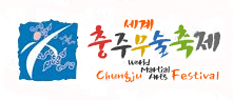
Taekwondo is the internationally acclaimed Korean martial art and it is one of the country's proudest cultural assets.
However, taekwondo is not alone among Korean martial arts.
Taekgyeon is another well-known form of Korean traditional fighting sport.
Taekgyeon, a hand-to-hand combat technique which also relies heavily on use of the legs, is a precursor of taekwondo and dates back to the Goguryeo Dynasty (37 B.C.-A.D. 668).
Taekgyeon is characterized by its fluid, almost dance-like movements, whereas taekwondo uses more direct, rigid movements.
To celebrate the proud tradition of taekgyeon, Chungju, a city in Chungcheongbuk-do (North Chungcheong Province) 140 kilometers south of Seoul, holds a festival every year.
The festival started in 1998 with the aim of further developing taekgyeon.
Since then, the festival has become popular among locals and visitors as well, and it has been designated one of the best regional events by the Ministry of Culture, Sports and Tourism for several years.
This year, the 11th Chungju World Martial Art Festival is to kick off at Chungju Tangeumdae UN Peace Park from Oct. 2 to 8. The festival will provide opportunities to enjoy and experience not only the local traditional martial art but also other high-level martial arts from around the world.
A record-breaking number of combatants are taking part. Some 1,210 participants in 51 teams from 28 countries will present their traditional martial arts.
The number of teams is double that of last year. Martial arts practitioners will demonstrate various martial arts forms and compete against each other during the festival.
The participating martial arts include karate from Japan, muay thai from Thailand, wushu from China, savate from France, sambo from Russia, capoera from Brazil, and kalari from India.
A promotional hall will be set up to give visitors a chance to learn some martial arts moves.
Visitors can learn a variety of international martial arts from visiting masters, learn about stunts from stuntmen, and take part in a reenactment of a test for recruiting military officials during the Joseon Dynasty (1392-1910).
An exhibition of traditional weapons and armor from dozens of nations will also be on display.
Prior to the festival, a street parade of traditional performing groups and people in interesting costumes will be held from 4 to 6 p.m. on Oct. 2.
For foreign participants and visitors, Chungju is for the first time offering home-stays. One to four foreigners will be able to stay per household.
It will be a good chance to experience Korean culture in ordinary Korean homes.
The city government is also operating free shuttles to nearby tourist attractions. One of those places is Jungang Pagoda, which stands 14.5 meters high and is the highest stone pagoda remaining from the Silla Dynasty (57 BC.-AD. 935).

Capoera, Brazilian martial art
Chungju is also famous for its delicious apples. You may wish to try Chungju's famous apple noodles.
For more information, visit
www.martialarts.or.kr (Korean, English).
Take a bus bound for Chungju at Dong Seoul (East Seoul) Bus Terminal (Travel time: 1 hour, 30 minutes / Fare 8,500 won / Bus runs every 30 minutes)
→ Get off at Chungju Bus Terminal and take a bus bound for Gageum. Get off at Tan-geum
By Han Aran
Korea.net Staff Writer